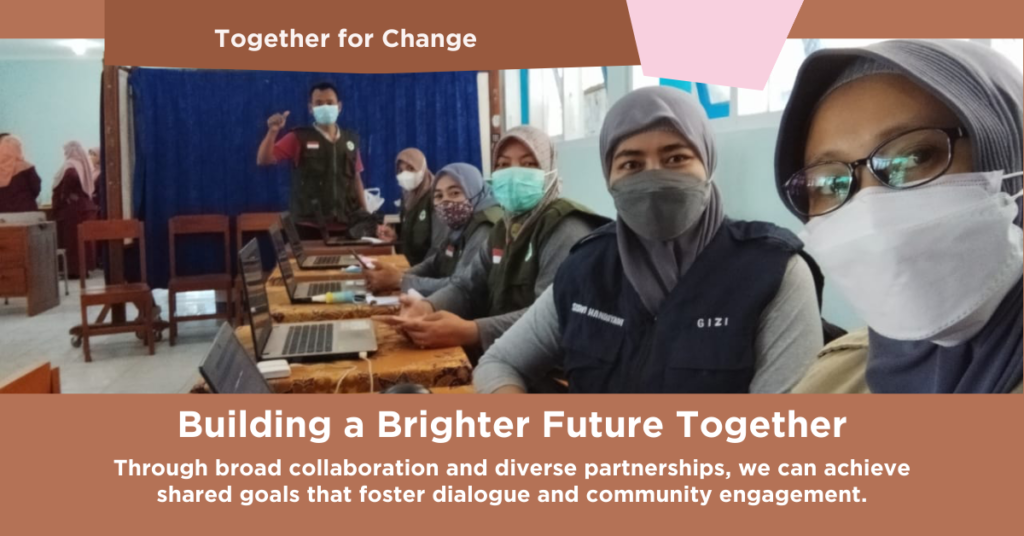Our Shared Journey Towards Better Health
Ensuring USAID funding sustainability in Bangladesh is critical for the future of health progress, building upon key partnerships and national efforts. Understanding the role of this international support becomes essential as we look ahead. Support like that from USAID has shaped past successes, but its future direction holds significant implications for health systems and outcomes worldwide. Thankfully, we’ve seen incredible health progress globally, and here in Bangladesh, we also share in that progress, celebrating improvements driven by healthcare professionals, communities, government initiatives, and vital international collaboration.
Thank you for reading this post, don't forget to subscribe!However, this journey hasn’t been solitary. International partnerships provide vital resources, valuable expertise, and essential collaborative energy. Among the most significant long-term health partners has been the United States, primarily through the United States Agency for International Development (USAID). Indeed, for decades, specific USAID funding mechanisms have been critical components supporting essential health programs.
Yet, the landscape of international aid isn’t static. Global politics, economic shifts, and changing priorities can influence funding levels and focus areas. For instance, we saw discussions about potential aid cuts during previous US administrations. While the current administration (as of April 2025) generally expresses strong support for global health, adaptation is always necessary. Consequently, this leads us to crucial questions about the road ahead.
This article delves into the complexities of health program sustainability within the Bangladesh context, focusing on programs historically supported by USAID funding. We will explore the key challenges, examine promising strategies being employed, and discuss the shared responsibility required to build a truly resilient and self-sufficient health system. Achieving USAID funding sustainability in Bangladesh is essential for locking in progress and ensuring better health for generations to come.
Part 1: Understanding Health Aid Sustainability

What Do We Mean by Health Program Sustainability?
Sustainability, in the context of international health aid, requires careful definition. It means ensuring positive health outcomes continue long after external support ends. Service delivery capacities achieved during a funded project must also persist. Essentially, it’s about building something lasting. True sustainability encompasses several dimensions:
- Financial Sustainability: This involves the ability to secure stable, long-term funding. Increasingly, this funding should come from domestic sources, reducing reliance on external donors.
- Institutional Sustainability: This focuses on strengthening local institutions. Primarily, this means the government’s health system (like the Ministry of Health and Family Welfare – MOHFW). However, it also includes local NGOs and community structures. These institutions must effectively manage, deliver, and oversee health programs independently.
- Programmatic Sustainability: This relates to integrating project activities into routine functions. Externally funded projects often focus on specific diseases. These must be absorbed into the broader national and local health system framework. This ensures services continue seamlessly.
- Community Sustainability: This requires fostering community awareness and demand for services. Active participation in health initiatives is also key. This ensures programs remain relevant and utilized by the people they intend to serve.
Achieving sustainability is crucial for several reasons. Firstly, it prevents the reversal of hard-won health gains. Secondly, it avoids creating parallel systems that collapse when aid withdraws. Thirdly, it empowers local ownership. Finally, it ensures more efficient and effective use of all resources for long-term impact.
The Role of USAID Funding in Bangladesh’s Health Sector (Brief Recap)
It’s important to acknowledge USAID’s significant positive impact over decades in Bangladesh. Key areas like Maternal and Child Health (MCH), Tuberculosis (TB) control, and family planning have benefited greatly. Nutrition programs and responses to infectious disease outbreaks also received vital support. This came through technical expertise and financial resources via USAID-funded projects. It’s important to acknowledge USAID’s significant positive impact over decades in Bangladesh. Often, this aid was delivered through specific projects. These projects had defined timelines and goals. They also operated in partnership with the government and local organizations. While incredibly valuable, the project-based nature of this aid inherently raises the question. How can these benefits continue long-term once project cycles conclude?
Part 2: Challenges to USAID Funding Sustainability in Bangladesh

Key Challenges in Achieving Health Program Sustainability
Transitioning away from reliance on external support like USAID funding presents several challenges. Achieving self-sustained health programs in Bangladesh requires overcoming these interconnected hurdles:
Financial Sustainability Hurdles
Securing adequate domestic funding remains a primary challenge. Bangladesh’s economy has grown significantly. However, the proportion of the national budget allocated to health may still be insufficient. It might not cover all costs previously handled by donors.
Mobilizing Alternative Resources
Mobilizing alternative resources also takes time and effort. Examples include expanding health insurance or engaging the private sector effectively. Furthermore, supportive policies are required for these shifts. Overcoming dependence requires significant fiscal commitment. This can be difficult amidst competing national priorities. Therefore, finance is a core aspect of the USAID funding sustainability Bangladesh puzzle.
Strengthening Institutional Capacity
Capacity has grown substantially within the health system. Nevertheless, ensuring government systems can fully take over complex programs needs ongoing effort. This applies at national, district, and local levels. These programs were often managed with intensive donor support previously. Continued strengthening is needed in areas like procurement and supply chain management. Technical expertise, advanced data analysis, and quality assurance also require attention after projects end. Consequently, gaps in any of these areas can hinder the smooth continuation of services.
Ensuring Programmatic Integration
Donor-funded projects frequently focus on specific “vertical” programs. Examples include dedicated TB or HIV initiatives. Integrating these specialized services into the broader “horizontal” primary healthcare system can be complex. This broader system provides routine care. Challenges include aligning different reporting systems. Ensuring primary care staff are adequately trained is another hurdle. Avoiding duplication of efforts is also crucial. Improper integration can lead to fragmented care and inefficiencies. As a result, achieving health program sustainability becomes more difficult.
Building Community Ownership and Demand
Sometimes, projects create demand through specific incentives. Intensive outreach activities might also boost service use. These activities often cease when funding ends. Therefore, building deep-rooted community understanding is vital. People need to grasp the importance of services like routine immunizations or preventative screenings. Fostering genuine community ownership and advocacy is also crucial. This ensures people continue to seek out and support these services long-term.
Policy Consistency and Political Will
Long-term sustainability requires a stable policy environment. Supportive policies are essential. Consistent political commitment to prioritizing health is fundamental. Allocating necessary domestic resources is also key. Implementing policies favouring sustainable financing (like health insurance) and system strengthening helps greatly. However, political changes or shifts in policy focus can sometimes disrupt long-term sustainability planning.
Part 3: Strategies for Enhancing Sustainability

Pathways Towards Sustainable Health Programs in Bangladesh
Addressing sustainability challenges requires proactive strategies. Collaboration is also key. The focus must be on building a resilient health system capable of sustaining essential services. Achieving USAID funding sustainability Bangladesh involves multiple approaches working together:
Strengthening Domestic Resource Mobilization (DRM)
This strategy is arguably the most critical for long-term success. Potential avenues for Bangladesh include several options.
- Firstly, increasing the percentage of the national budget allocated to health.
- Secondly, improving efficiency in tax collection and allocation mechanisms.
- Thirdly, exploring pro-health taxes (e.g., on tobacco or sugary drinks with revenues potentially earmarked for health).
Expanding Insurance and Private Sector Roles
Strategically expanding social health insurance schemes is another avenue. This can reduce out-of-pocket expenses for citizens and provide a stable funding pool. Creating enabling environments for private sector investment and philanthropy in health is also important.
Strategic Transition Planning (USAID & Government)
Sustainability planning should not be an afterthought. It must start early. Best practice involves several key elements:
- Joint Planning: USAID and the MOHFW (and other ministries) should collaboratively design projects from the outset. These designs must include clear sustainability and exit strategies.
- Phased Transition: Responsibilities should be transferred gradually over time. This applies to both financial and management functions. Abrupt withdrawal should be avoided. Instead, phased transitions allow local systems to adapt and absorb functions smoothly.
- Capacity Building Focus: Project activities should be specifically designed to build the capacity of government counterparts. Local institutions also need strengthening through project design.
Building Local Capacity Deliberately
Investment must extend beyond short-term training initiatives. It truly means:
- Developing strong local leadership in health management and policy.
- Strengthening local NGOs and civil society organizations. They need support to become effective long-term partners in service delivery and advocacy.
- Supporting local research institutions. These institutions can generate crucial evidence for policy-making. Ultimately, empowering local actors is fundamental for USAID funding sustainability Bangladesh.
Integrating Programs into National Systems
Concrete steps are needed for merging project activities seamlessly. Examples include:
- Harmonizing data collection and reporting systems. Project systems must align with the government’s Health Management Information System (HMIS).
- Developing clear pathways for project staff. They might potentially transition into government roles where appropriate.
- Ensuring essential medicines procured by projects are integrated into the national supply chain.
- Aligning project service delivery guidelines with established national protocols.
Fostering Private Sector & NGO Engagement
Exploring sustainable roles beyond direct donor funding is important. Possibilities include:
- Public-Private Partnerships (PPPs) for specific health services or infrastructure.
- Social enterprise models for delivering health goods or services effectively.
- Strengthening the regulatory environment. This ensures quality across both public and private sectors.
- Encouraging corporate social responsibility (CSR) initiatives focused on health.
Enhancing Efficiency and Innovation
Making programs more cost-effective significantly helps sustainability. Strategies include:
- Utilizing digital health tools like mHealth and telemedicine. These can improve reach and efficiency.
- Optimizing service delivery models, for example through task-shifting where appropriate.
- Strengthening preventative care. This helps reduce the burden of costly treatments later on.
Part 4: The Way Forward: Shared Responsibility

A Shared Responsibility for Bangladesh’s Health Future
Achieving sustainable health programs is a complex goal. Ensuring long-term success beyond direct USAID funding is not the sole responsibility of any single entity. Instead, it requires a concerted effort from all stakeholders involved.
Key Stakeholder Roles
Identifying the roles of each partner clarifies the path forward:
- Government of Bangladesh: Strong political will is essential. Health must be prioritized in national budgets. Enabling policies for domestic resource mobilization and private sector engagement are needed. Furthermore, the government must lead system strengthening and program integration.
- USAID and other Development Partners: Programs need to be designed with sustainability in mind from the start. Partners should invest heavily in local capacity building. Transparent transition planning with the government is crucial. Additionally, harmonizing efforts to avoid duplication is important.
- Local NGOs and Civil Society: These groups play a vital role in service delivery and community mobilization. They also advocate for health rights and domestic funding. Moreover, they hold stakeholders accountable. Their capacity requires ongoing support.
- Healthcare Professionals: Their dedication is the backbone of the system. They need continuous training and supportive working environments. Their involvement in planning service delivery improvements is also valuable.
- Communities and Individuals: Active participation in health programs matters greatly. Demanding quality services helps drive improvement. Adopting healthy behaviours reduces burden. Engaging in local health governance structures also contributes to long-term success.
Continued dialogue is critical. Mutual accountability and adaptive management based on evidence are also necessary components. The journey towards USAID funding sustainability Bangladesh is undoubtedly complex. However, by working together, Bangladesh has immense potential. It can build a truly resilient, self-sufficient, and high-quality health system for its people far into the future.
Building a Lasting Health Legacy
Securing the impressive health gains achieved in Bangladesh requires looking beyond project timelines. Addressing USAID funding sustainability Bangladesh is therefore paramount. This ensures that vital health services continue, strengthen, and expand to meet future needs. While challenges certainly exist related to finances, capacity, and integration, clear strategies offer a viable path forward. These focus on increased domestic investment, robust local ownership, effective transition planning, and multi-stakeholder collaboration.
Ultimately, the transition towards greater self-reliance in the health sector is a long-term endeavour. It demands sustained commitment from the government. It also needs continued smart support from partners like USAID. Furthermore, active engagement from civil society and communities is essential. By embracing this shared responsibility, Bangladesh can build a truly sustainable health legacy for generations to come.
(Disclaimer: Specific aid projects, funding levels, and transition plans are subject to change. Consult official sources from USAID and the Government of Bangladesh for current details.)

